Toyota Auris (2013-2019) Review
Written by Andrew Brady
Quick overview
Pros
- Ultra-reliable
- Hybrid version is affordable and economical
- Effortless to drive
Cons
- Dull design inside and out
- Early engines are disappointing
- Hybrid prices carry a premium over regular models
Overall verdict on the Toyota Auris
"The Toyota Auris was hardly the most exciting family hatchback, which did limit its appeal to some. But in the second-hand market, reliability, value for money, and fuel economy matter more. This is why it enjoys renewed interest among used car buyers - particularly in hybrid form."
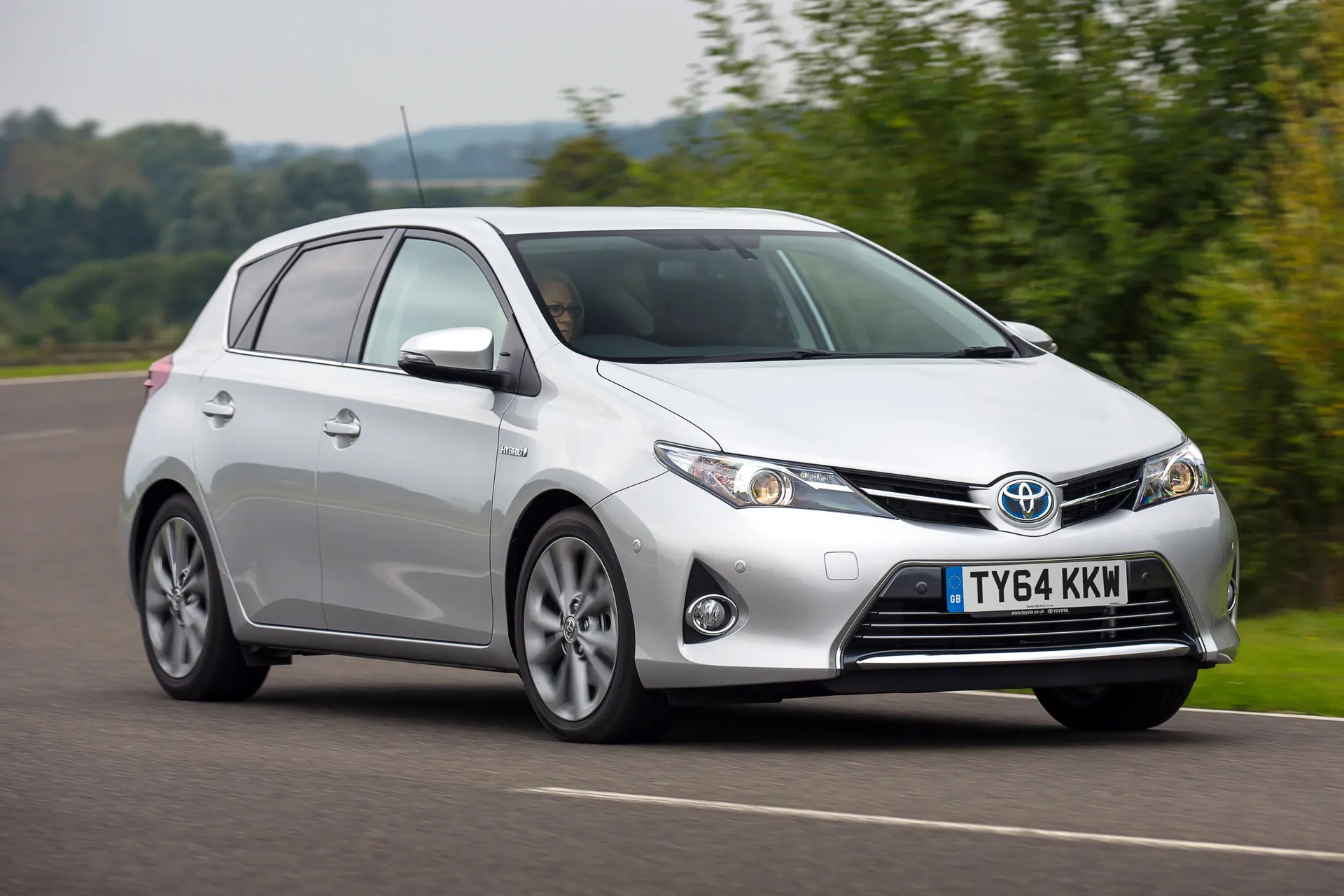
The second-generation Toyota Auris, detailed in this review, is more appealing-looking than its blobby-looking predecessor. Stung by criticism that the first version was merely a rounded-off facsimile of the older Corolla, Toyota went for a more straight-edged look for this model. It still does little to excite and the interior is about as interesting as a plate of beans.
The Auris name experiment didn't work, either, as after two generations, Toyota went back to the storied Corolla nameplate with its much more imposing replacement, launched in 2019.
It’s not for how it looks or the name that most people buy an Auris on the secondhand market, though. It could look like anything and its committed fans would still sign on the dotted line. Why? Two reasons. One: reliability, which Toyota has mastered like few other companies. And two: hybrid tech, as Toyota was a hybrid pioneer that has fully capitalised on its early mover status.
You can buy non-hybrid Auris. You can even buy diesel models if you’re keen to make Toyota bosses shuffle uncomfortably at the thought they actually once sold such a thing. But you’re far better off buying an Auris Hybrid. You’ll experience everything that makes the famous Toyota Prius such a landmark car but in a more conventional and family-friendly package.
The Auris is a perfectly competent car to drive, as you’d expect. Handling is effortless and the ride isn’t bad. The car doesn’t set any new standards or feel particularly thrilling or luxurious, but it does exactly what you’d expect of it, without too much fuss or drama.
Inside, it’s very plain-looking, with a tall and cliff-like dashboard made of gloomy (and mostly hard) dark plastic. It’s very solidly built, though, and feels like it will last a long time. The layout is comfortable, with a good driving position and plenty of space for those in the rear. Even the hybrid model has a decent-sized boot.
Toyota revised the Auris in 2015 with new, downsized petrol engines and an improved hybrid. The diesel engine was also new, sourced from BMW instead of being a Toyota design. Inside, the dashboard was refreshed with new colours and the infotainment system was updated.
By the end of the 2013-generation car’s life, most models sold were hybrids. Buyers were responding to the excellence of Toyota’s Hybrid Synergy Drive system, which actually led to the firm rejecting diesel entirely.
Later Auris models were also notably well equipped – the firm even ditched the base-level Active grade and bolstered the amount of standard kit on other models within the range. The Auris was moving upmarket and this helped set the template for the car’s even bolder-looking 2019 successor.
Looking for a used car for sale? We've got 100s of Toyota Approved Used Cars for Sale for you to choose from, including a wide range of Toyota Auris cars for sale.
Is the Toyota Auris right for you?
What’s the best Toyota Auris model/engine to choose?
What other cars are similar to the Toyota Auris?
Comfort and design: Toyota Auris interior
"The slightly boxy, angular look of the Auris on the outside is reflected by an upright and straight-lined interior. The dashboard is tall, with a cliff-like face containing the air vents, well-located infotainment screen and, below, the climate control settings. It's bland, but it all works pretty well."
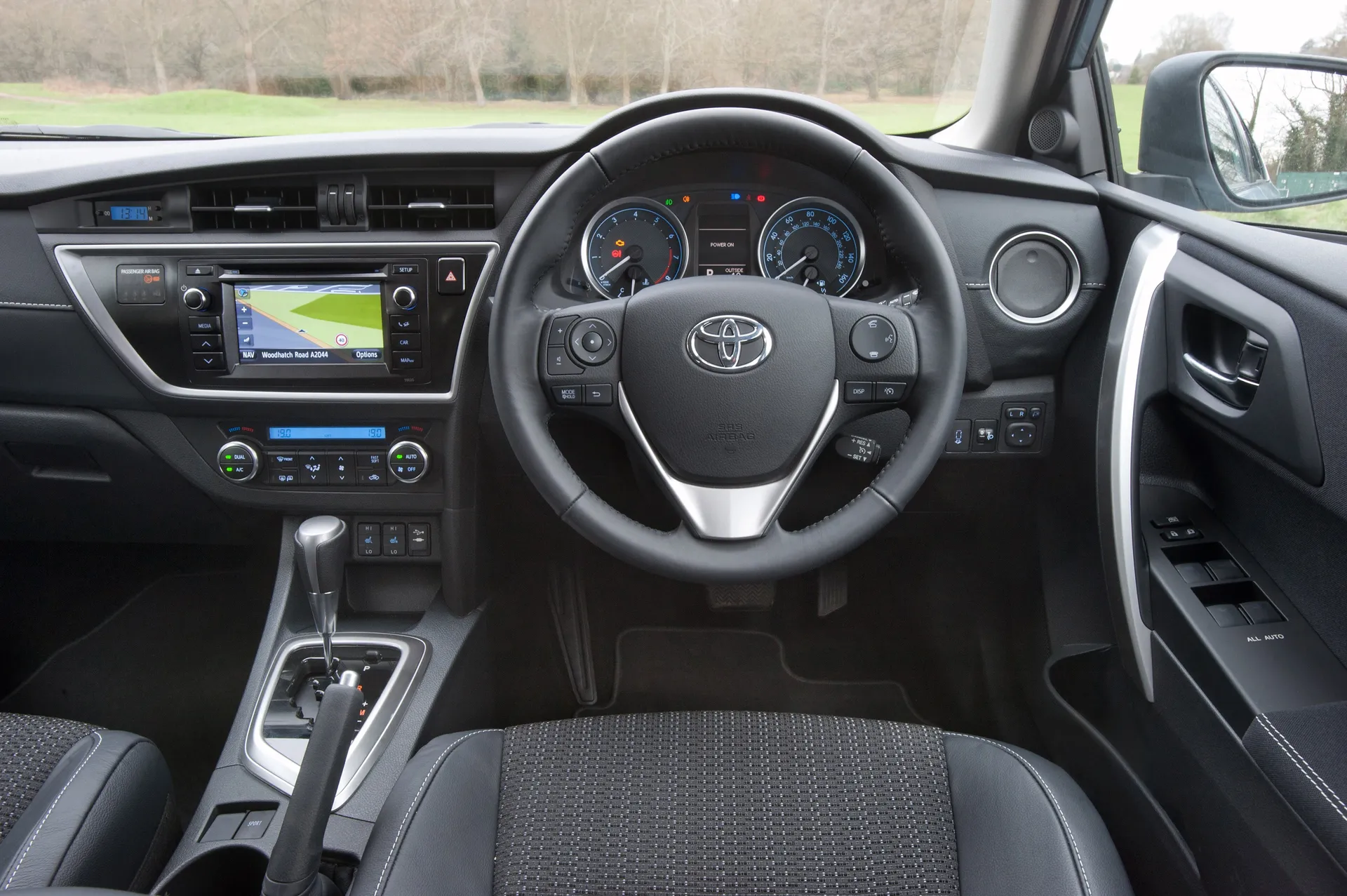
The Toyota Auris's interior is very typical of what Japanese brands were doing around a decade ago. Ergonomics and build quality took priority over design and plush-feeling materials.
The driver faces twin round instruments set within deep cowls, with a rather low-res screen in between (this became colour from 2015 and looks dated). You get a rev counter in normal models, which is replaced by an energy usage dial in hybrids. Hybrids also show energy flow. This tells you if the car is being driven by the battery, engine or both.
Pre-facelift models were rather dark and gloomy. Toyota brightened things up a little with the 2015 facelift, using slightly more colourful materials and a scattering of piano black trim and chrome highlights. The design is nevertheless rather plain, and even the steering wheel looks boring.
There are a few too many buttons scattered around the interior, with the steering wheel containing a particularly large array, but it’s all generally rather easy to use. The dials are clear and the car requires no special tricks to use. All the major controls are well-located, from the manual handbrake to the well-located pedals and gear lever. Hybrid models get a special gear lever that’s unusual-looking at first, but child’s play to use.
The front seats are firm and supportive – not overly hard, but comfortable enough not to bite on long journeys. It’s user-friendly in the rear, too, with a decent bench seat that’s well laid out and comfortable. As an honest, straightforward family car or commuter car, it's entirely up to snuff.
Quality and finish
Infotainment: Touchscreen, USB, nav and stereo in the Toyota Auris
Space and practicality: Toyota Auris boot space
Handling and ride quality: What is the Toyota Auris like to drive?
"Handling perhaps isn’t high on the checklist for Toyota Auris drivers. This is not a car that enthusiasts flock towards, as Toyota had other priorities. But it's competent enough, and vice-free."
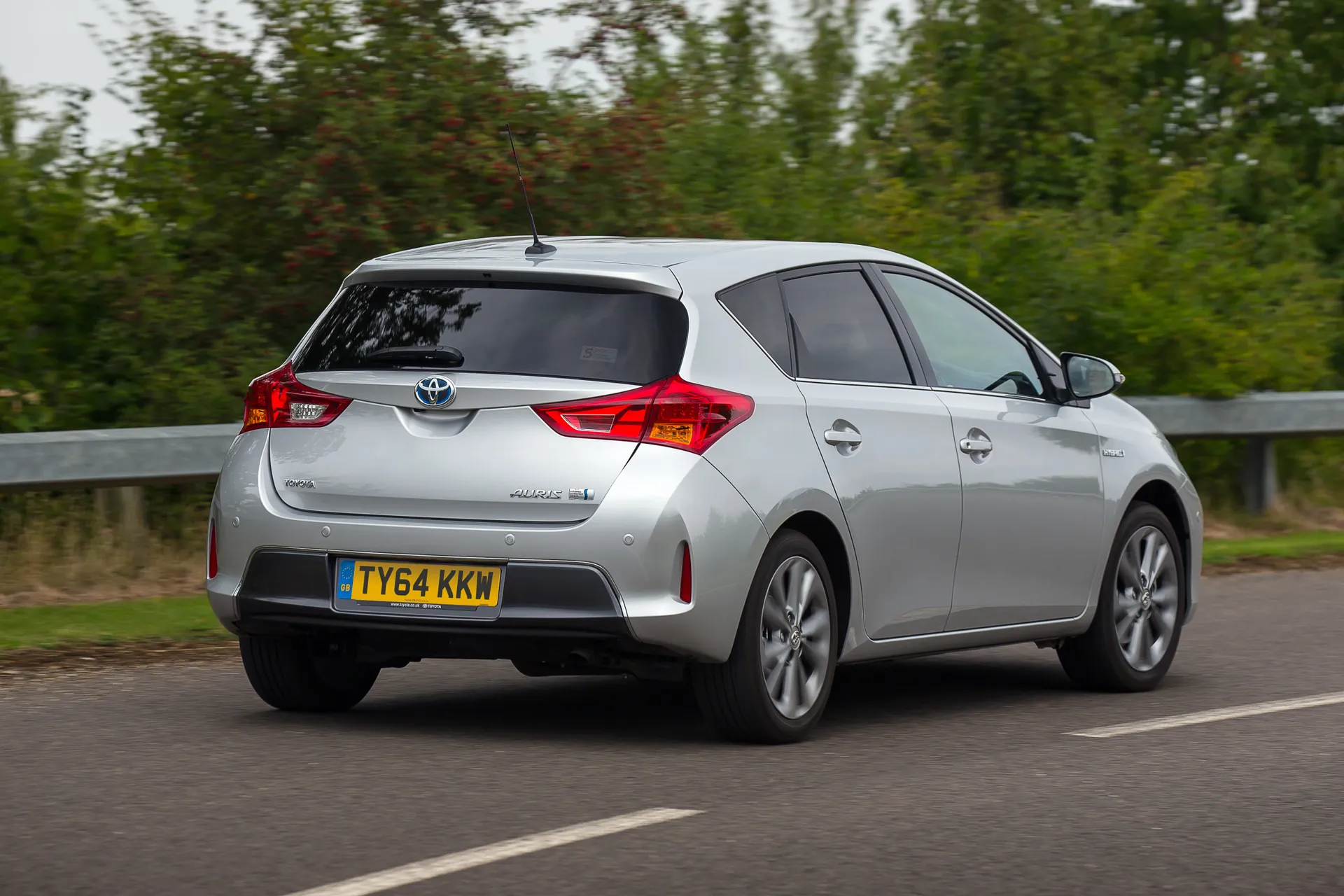
If you want the best-handling car in this sector, you should err towards something like a Ford Focus or SEAT Leon. That’s not to say the Toyota Auris is particularly flawed. It’s perfectly competent and up to class standards – it’s just not a very interesting car to drive.
The chassis is quite grippy and holds on well through corners. You might notice a bit of squirm from the front wheels when accelerating hard in the hybrid, because of the electric motor’s punchy response, but standard stability and traction control keep things settled.
The steering is light and easy. You don’t get much feedback through the wheel itself, but neither is it particularly uncertain or gloopy. Threading the Auris through a squeeze of bends won’t have the hairs on the back of your neck standing up, but won’t be an especially troublesome or uncertain experience either.
The ride is quite nice, soaking up lumps and bumps in town rather well. It is a good urban car, which feels nice and supple during low-speed use. It feels a bit choppier at higher speeds as if the suspension isn’t quite as sophisticated during more vigorous use – a Volkswagen Golf delivers a more pliant ride on the motorway or a fast A-road – but it’s not a deal-breaker.
What engines and gearboxes are available in the Toyota Auris?
Refinement and noise levels
Safety equipment: How safe is the Toyota Auris?
MPG and fuel costs: What does the Toyota Auris cost to run?
"The Toyota Auris was tested to the older more lenient NEDC fuel economy test standard. As a result, it delivers some extremely impressive on-paper figures. The 1.4 D-4D was rated at 72.4mpg, and even the 1.33 petrol could officially top 51mpg. It’s not quite as impressive in the real world, but still decent."
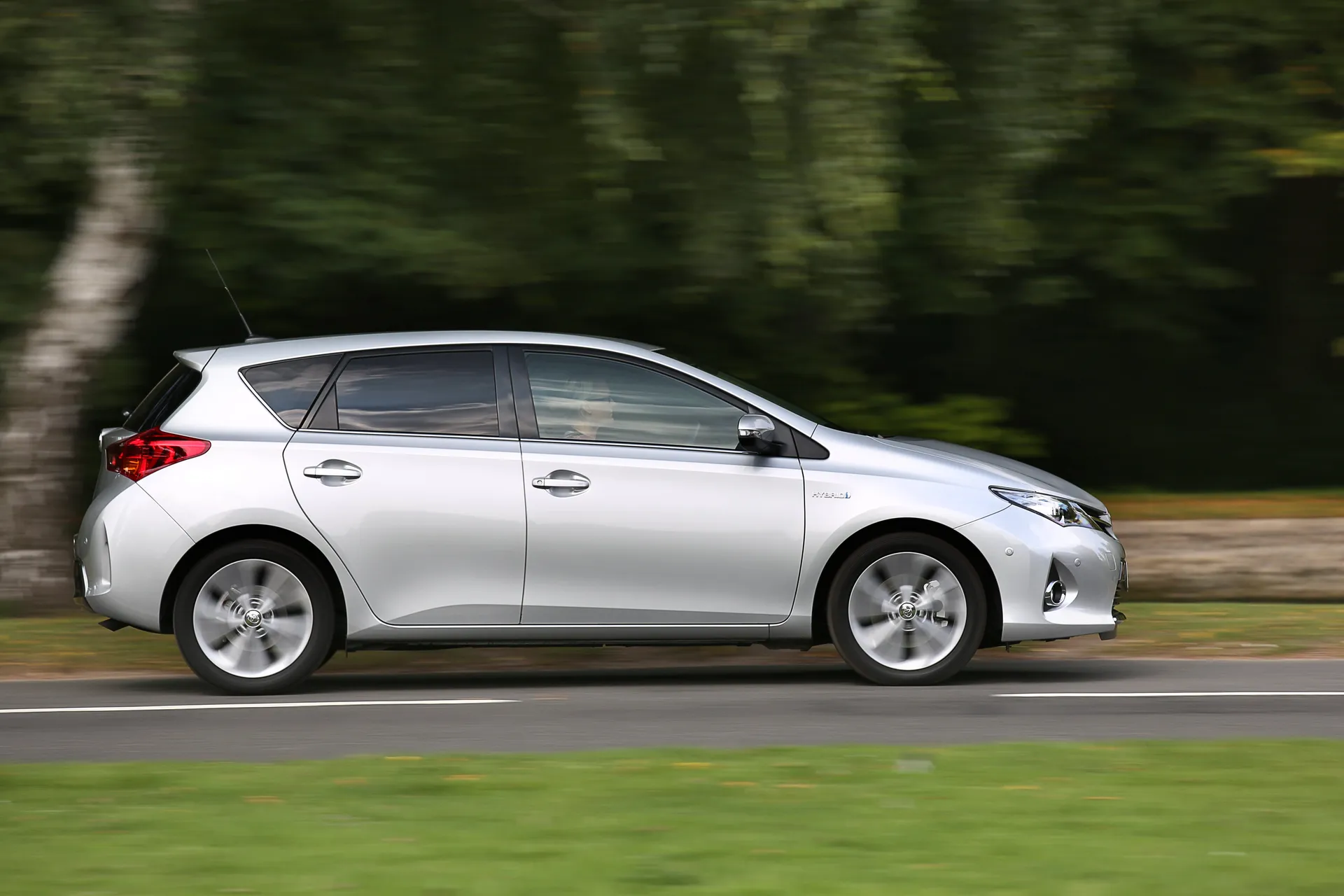
Thanks to its ability to operate frequently as a pure EV, the hybrid can return impressive economy figures in town. On paper, it returns 72.4mpg, although the real-world figure is closer to 54.5mpg.
The 1.2-litre turbo serves up even better economy than the 1.33-litre, averaging as much as 58.9mpg as a manual, or 61.4mpg as a CVT auto. This does drop significantly on models with larger alloy wheels, though. In the real world, expect 45mpg in mixed driving from the 1.2 petrol.
Toyota Auris reliability and warranty
Toyota Auris insurance groups and costs
VED car tax: What is the annual road tax on a Toyota Auris?
Toyota Auris price
"If you’re happy not to have an Auris Hybrid, prices of early second-generation cars look tempting. You can pick up a 1.4-litre D-4D diesel, 1.33-litre or 1.6-litre petrol car for less than £3,500. These will be mid-range higher mileage variants, with a decent amount of standard equipment."
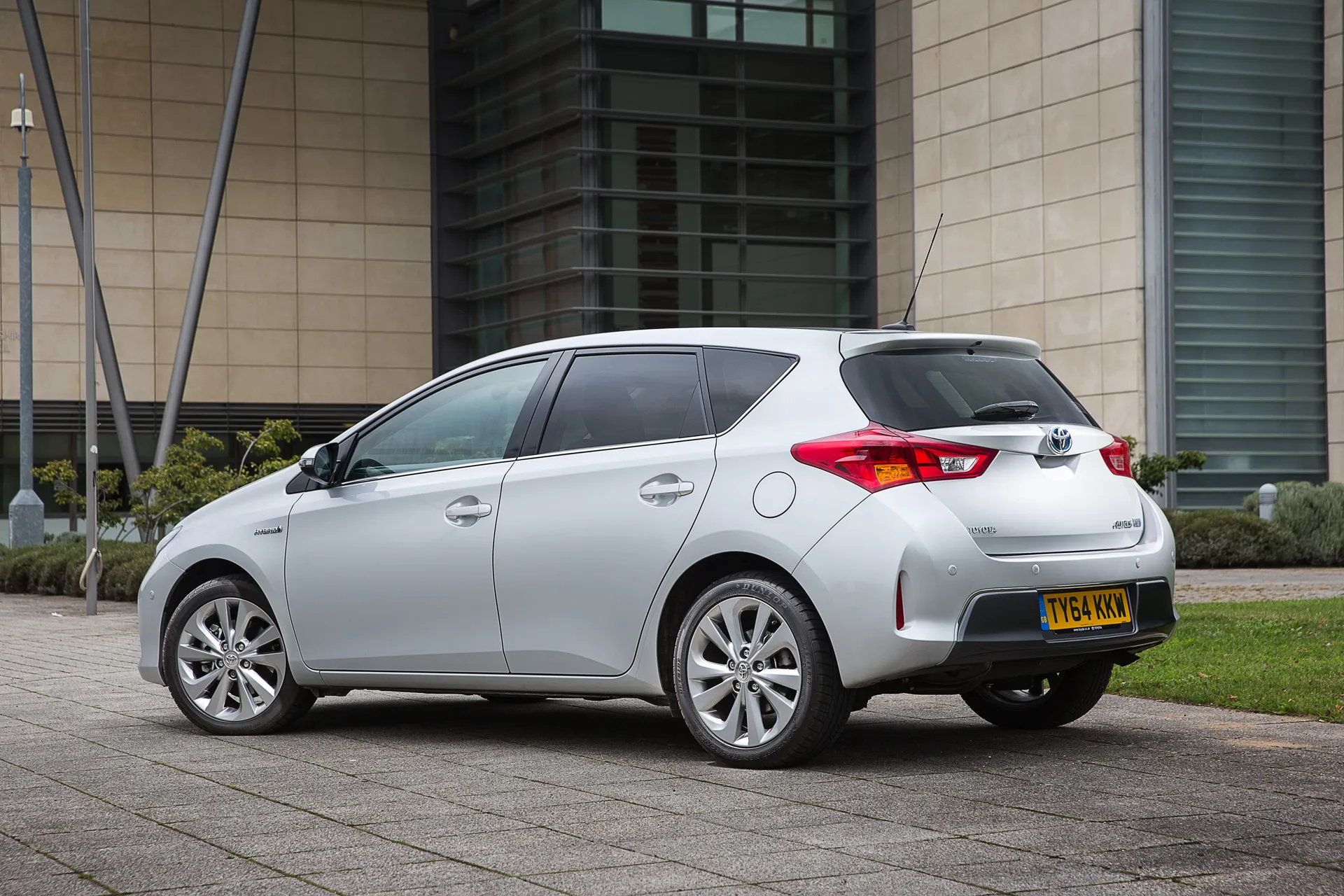
The hybrids aren't too far behind. £2,500 gets you an early car with high mileage. And there are lots around with mega miles because they are very popular with minicab and private hire firms. Budget around £7,000 and you'll have access to lower-mileage models.
Facelifted post-2015 cars start from around £3,200, and we think a 1.2-litre turbo in Business Edition spec is a great entry into the Auris range. Again, you need to up your budget by around £1,000 if you want lower mileage cars.
Trim levels and standard equipment
Ask the heycar experts: common questions
Is the Toyota Auris a good car?
Which Toyota Auris is best?
Has Toyota stopped making the Auris?
Toyota Auris cars for sale on heycar
Toyota Auris1.8 Hybrid Icon Tech TSS 5dr CVT
201836,765 milesHybrid£278 mo£12,784
Fair priceDeliveryToyota Auris1.8 Hybrid Icon TSS 5dr CVT
201873,724 milesHybrid£233 mo£10,697
Fair priceNE297TEToyota Auris1.8 Hybrid Design TSS 5dr CVT [Nav]
201870,053 milesHybrid£247 mo£10,795
Good priceNG185HXToyota Auris1.8 Hybrid Excel TSS 5dr CVT [Leather]
201834,351 milesHybrid£310 mo£13,995
Fair priceDeliveryToyota Auris1.2T Icon TSS 5dr CVT
201942,238 milesPetrol£11,240
CV326AT
Get our latest advice, news and offers
Keep me updated by email with the latest advice, news and offers from heycar.
By submitting you agree to our privacy policy


